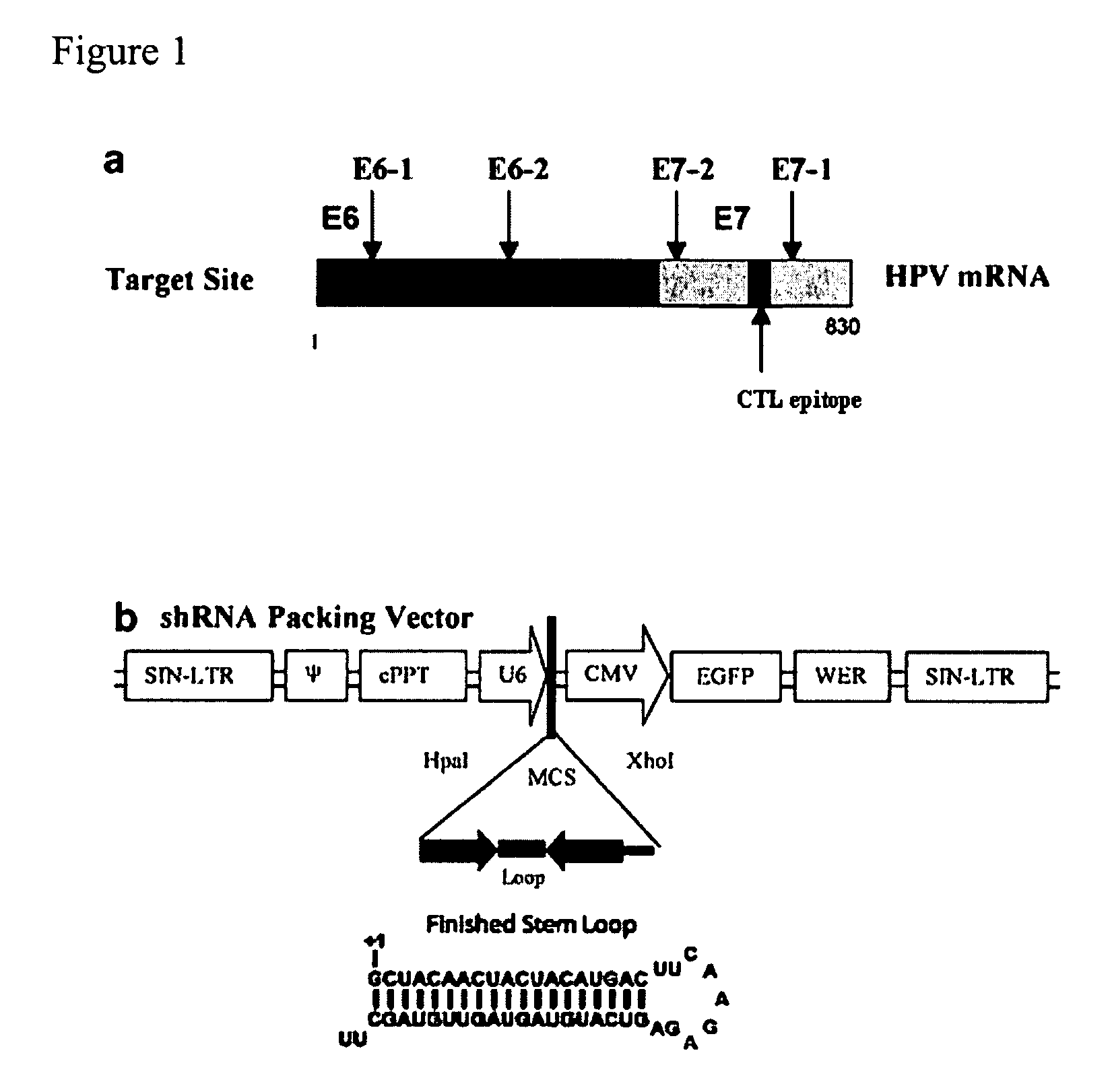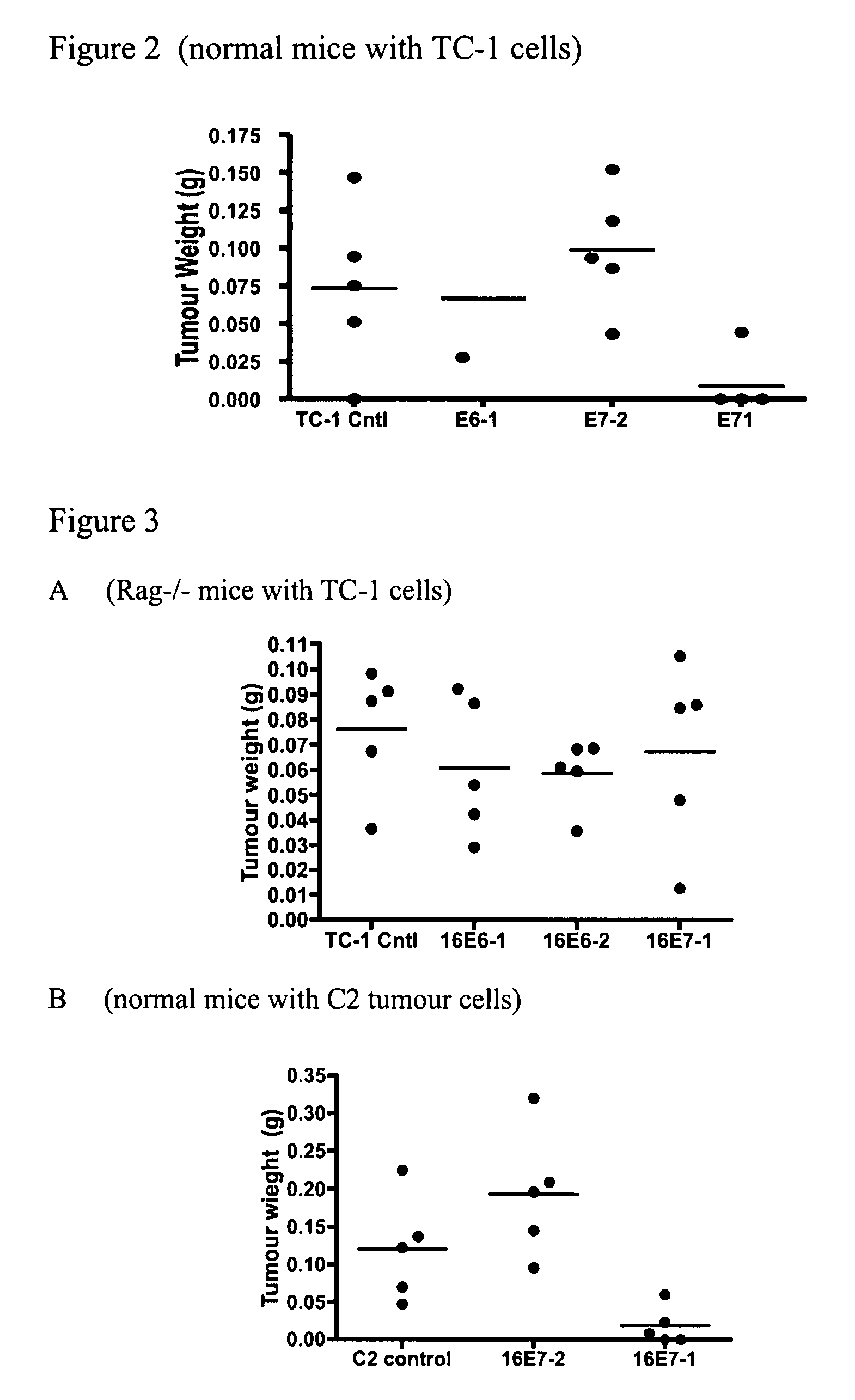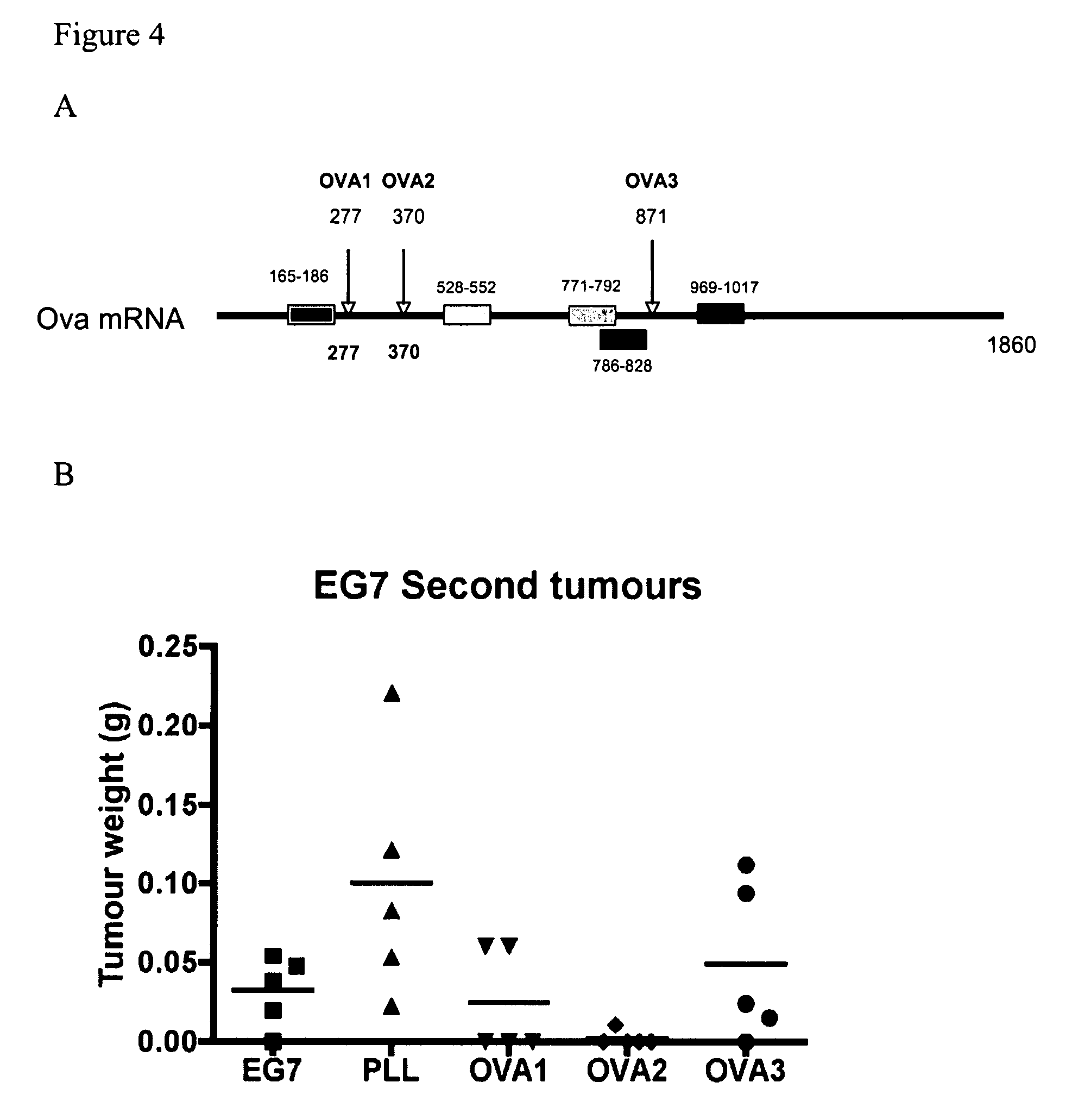Method of inducing an immune response
- Summary
- Abstract
- Description
- Claims
- Application Information
AI Technical Summary
Benefits of technology
Problems solved by technology
Method used
Image
Examples
example 1
Induction of an Immune Response Against Viral Antigens by RNAi
[0130]TC-1 tumour cells were pre-treated with lentiviral vectors expressing one of the following shRNA molecules: shRNA 16E6-1; shRNA 16E6-2, shRNA 16E7-1 and shRNA 16E7-2 (see FIG. 1 for a schematic representation of the regions of E6 / E7 against which the shRNAs are targeted). TC-1 cells are a tumourigenic, H-2b cell line expressing the E6 and E7 proteins of HPV16 (Lin, et al., 1996. Cancer Res. 56: 21-26). The cells were then injected into C57BL / 6 mice (syngeneic with the tumour cells) and allowed to establish for 10 days. After this period of time parental tumour TC-1 cells that have not been treated in any way were injected into the mice. The mice were then analysed at day 17 to determine whether the secondary tumour cells could grow, i.e. to determine whether the mice have mounted an immune response against the E6 or E7 protein, which then inhibits growth of the injected secondary tumour cells.
[0131]The results shown...
example 2
Induction of an Immune Response Against OVA by RNAi
[0141]To further investigate the results obtained above, we selected three shRNAs (OVA1, OVA 2 and OVA3) to target the OVA mRNA sequence (See FIG. 4A).
[0142]OVA 1 and OVA2, as depicted in FIG. 4A, were designed to target a region of the OVA mRNA sequence that is downstream of a sub-dominant CTL epitope located at nucleotides +165 to +186. OVA 3 was designed to target a region of the OVA mRNA sequence that is downstream of the dominant CTL epitope located at nucleotides +771 to +792. Other T cell epitopes present in the OVA sequence are shown in FIG. 4A.
[0143]The shRNA expression cassettes contained 19 nt of the target sequence, followed by the loop sequence (TTCAAGAGA), reverse complement to the 19 nt, a stop codon for U6 promoter, and an Xho1 site. The sequences of the shRNAs were as follows.
[0144]
OVA1:5′-TACCAAATGATGTTTATTCGTTTCAAGAGAACGAATAAACATCATTTGGTATTTTTTC (SEQ ID NO: 15)OVA2:5′ TGGAACTGTATAGAGGAGGCTTTCAAGAGAAGCCTCCTCTATACAG...
PUM
| Property | Measurement | Unit |
|---|---|---|
| molecular weight | aaaaa | aaaaa |
| weight | aaaaa | aaaaa |
| temperature | aaaaa | aaaaa |
Abstract
Description
Claims
Application Information
 Login to View More
Login to View More - R&D
- Intellectual Property
- Life Sciences
- Materials
- Tech Scout
- Unparalleled Data Quality
- Higher Quality Content
- 60% Fewer Hallucinations
Browse by: Latest US Patents, China's latest patents, Technical Efficacy Thesaurus, Application Domain, Technology Topic, Popular Technical Reports.
© 2025 PatSnap. All rights reserved.Legal|Privacy policy|Modern Slavery Act Transparency Statement|Sitemap|About US| Contact US: help@patsnap.com



